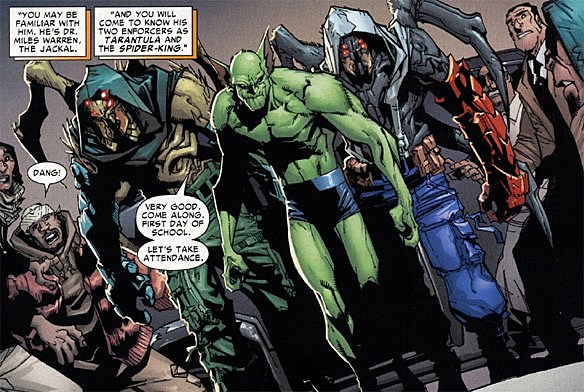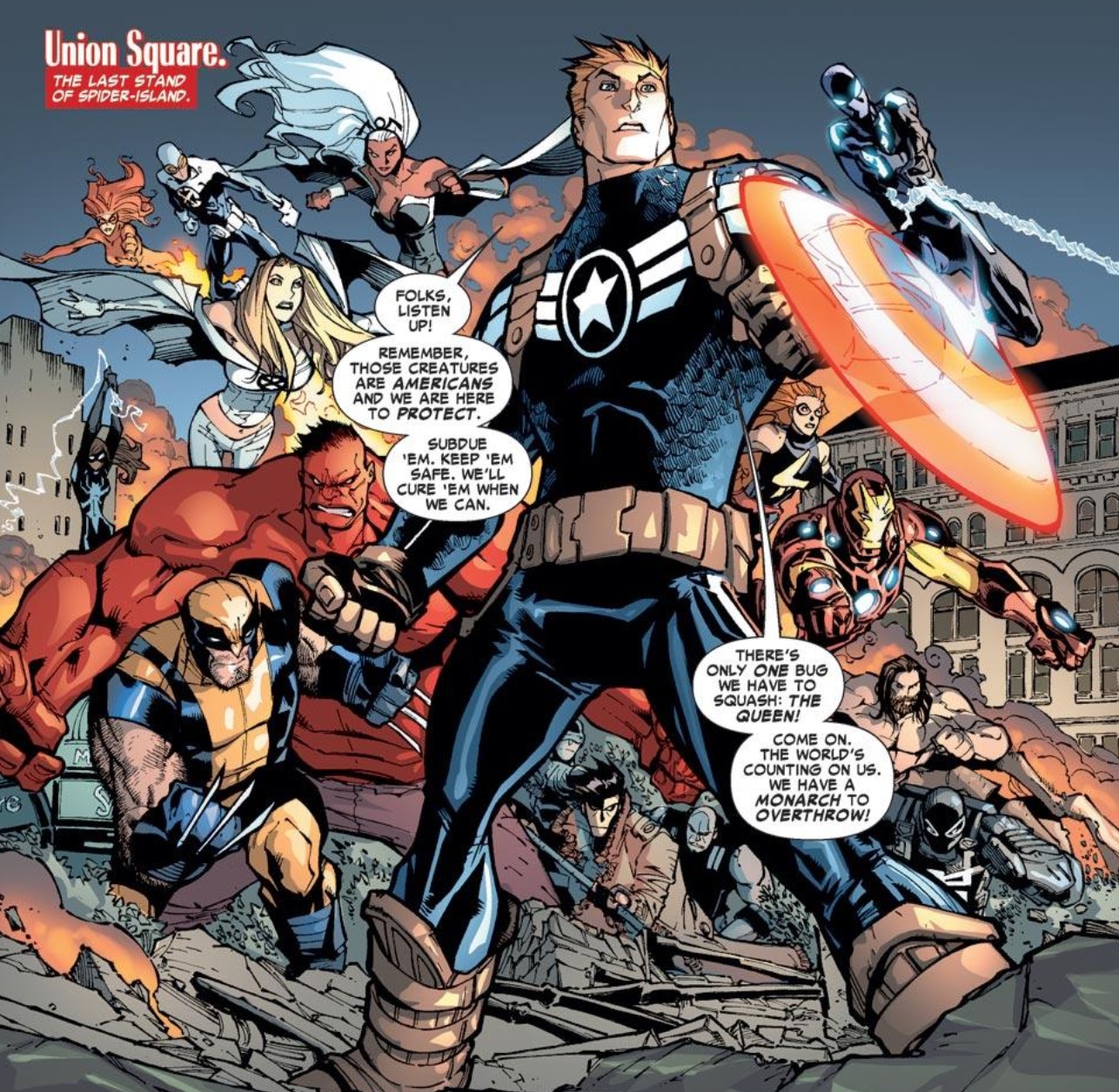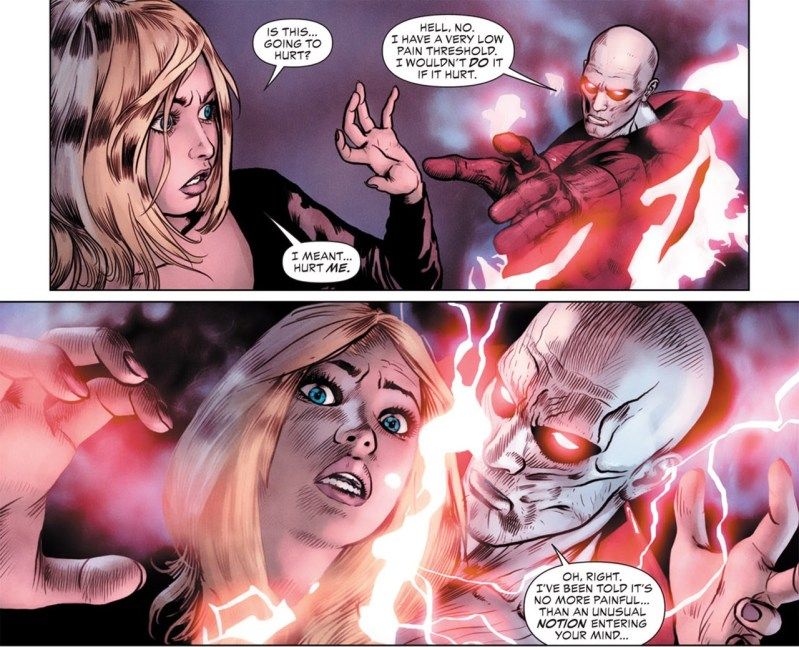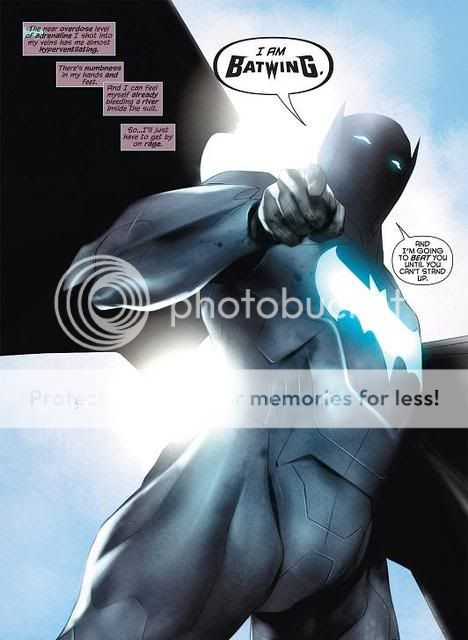 |
| I think this is the definition of "taking the shirt off your back". |
Writer: Dan Slott
Artist: Humberto
Ramos
Collects: The Amazing Spider-Man #666-673, Venom 7-9,
Spider Island: Deadly Foes, material from The Amazing Spider-Man: 659-660, and Spider Island Spotlight.
Background
Information:
Spider-Man’s comic history has had high points and low
points, but one of the strengths of the franchise is that it embraces them
both. What you need to know for Spider
Island is that a lot of the story has its roots in the now-infamous Clone Saga from the 90s. In that story,
a mutated college professor known as The Jackal cloned both Peter Parker and
Gwen Stacey… repeatedly. It was a fairly long, fairly drawn-out affair that
introduced Spidey’s villain/clone/brother Kain- he fought the Web-head, hunted
down other clones and even went mad and killed his love interest. He found
himself killed in the storyline called Grim
Hunt.
And that’s all you need know.
Review:
Sometimes I wonder what
happened when writer Dan Slott gave his pitch for Spider Island to the guys at Marvel. Surely, Joe Quesada must have
been scratching his head. Yet, despite, or even because of its ridiculous
premise, Spider Island manages to be
incredibly entertaining.
 |
| I get by with a little help from my friends... |
So that ridiculous premise?
The Jackal, through genetically-altered bed bugs (yep) has given all of New
York spider powers. Peter’s abilities are now apparently obsolete as every New
Yorker revels in their newfound powers, not everyone really connects power and
responsibility like he does. The event calls for assistance from the Avengers,
the X-Men and even Agent Venom.
The best thing about Spider Island by far is that Dan Slott
realizes just how silly his story is. There are plenty of moments in the
collection which, had Slott decided to take himself too seriously, would switch
readers right off the event in the blink of an eye. Yet Slott’s script makes
fun of all of these moments with lines like “I swear, if we’re doing the
clone-thing again I’m going back to L.A.!” as a result, it’s hard to feel angry
at Slott for penning a rather silly event, and you’re left just feeling amused
by the whole thing.
Although Spider-Man is
always fun to read about, it’s Mary Jane that I found myself enjoying a lot
more, for reasons too awkward to spoil, she doesn’t get spider powers at all
for most of this book. Her frustration over this is delicious, as she rolls her
eyes and pouts over missing out on what initially seems like a party. When she
finally does get the powers, she revels in them in a way that is thoroughly
satisfying and brings in more than a few laughs.
Other characters in Spider Island help to make this
collection fun and exciting. The issues featuring Venom are by far the best of
the lot of the collection, with Rick Remender absolutely nailing the character
of Flash Thompson. J. Jonah Jameson also stands out as the spectacular
spider-mayor, Kaine Parker is well done for the short time we see him, even
Spidey’s girlfriend, Carlie-Q is entertaining to read about. It’s great when a
books supporting cast do so much to further the story.
But therein also lies Spider Island’s only real flaw. Spidey’s
role in the story is fairly minimal. He spends most of his time watching events
unfold, and only really takes action when he inevitably saves the day. Peter
Parkers place in the story is minimal, and it feels like we may as well be
reading about Reed Richards or Tony Stark. It makes the story feel slower than
it actually is, and certain parts feel harder to read than they really are.
The art is done mostly by
Humberto Ramos. If Ramos’ art style was done with any other character (say,
Wolverine or Hulk) it would have looked ridiculous. Ramos uses a cartoony,
exaggerated style that emphasis the humour that prevails in any Spider-Man
story worth its salt, and it works a treat.
 |
| And people get mad a Superman for property damage... |
Though possible, it’s
difficult fault Spider-Island. The
collection sees some great characterisation that doesn’t take itself too
seriously. It gets four and a half out of five clone things.
**** ½
+ Great Characterisation
+ Doesn’t take itself too
seriously
- Peter Parker may as well
not be there half the time.
Alternate Option: The Superior
Spider-Man: My Own Worst Enemy
For more Dan Slott
Spider-stories, look no further.












